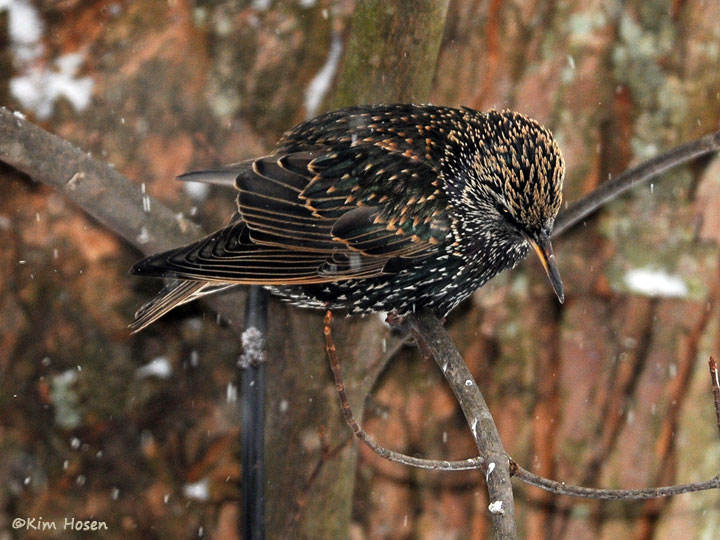European Starling
Sturnus vulgaris
European Starlings resemble blackbirds from a distance. They have short tails and a long, thin beak. They have pointy wings. In the summer, they are a purplish-black color and in the winter, they're brown with white spots. They grow to be about eight inches long.
European Starlings are songbirds that can live to be around 15 years old. They are loud and mimic voices quite well.
They travel in large groups with grackles and blackbirds, and look for food in fields of grass. They live here year round.
These birds eat seeds, small animals, insects, and fruit. They are very aggressive over food. They will fight to obtain the food they want. Their eating of insects helps to control pests.
Starlings build nests in holes in the ground out of plants, twigs, feathers, and trash. If the hole they want to use to build a nest in is already occupied, they will gladly fight for the spot.
If there are eggs, they will eat them out of the nest that is there already and destroy the nest. Sometimes, a female Starling will lay her eggs in the nest of another bird.
Their eggs are blue or green , and sometimes contain brown markings. These birds can lay three batches of eggs a year, which results in there being many of them.
The European Starling originally came to America when a group dedicated to introducing all birds mentioned in Shakesphere's works set some free in Central Park, NY.
These birds live near towns and civilization. Some people consider European Starlings to be pests because they eat crops and can make nests in uncomfortable places for humans. They also make obnoxious noises and pick fights with other birds.

